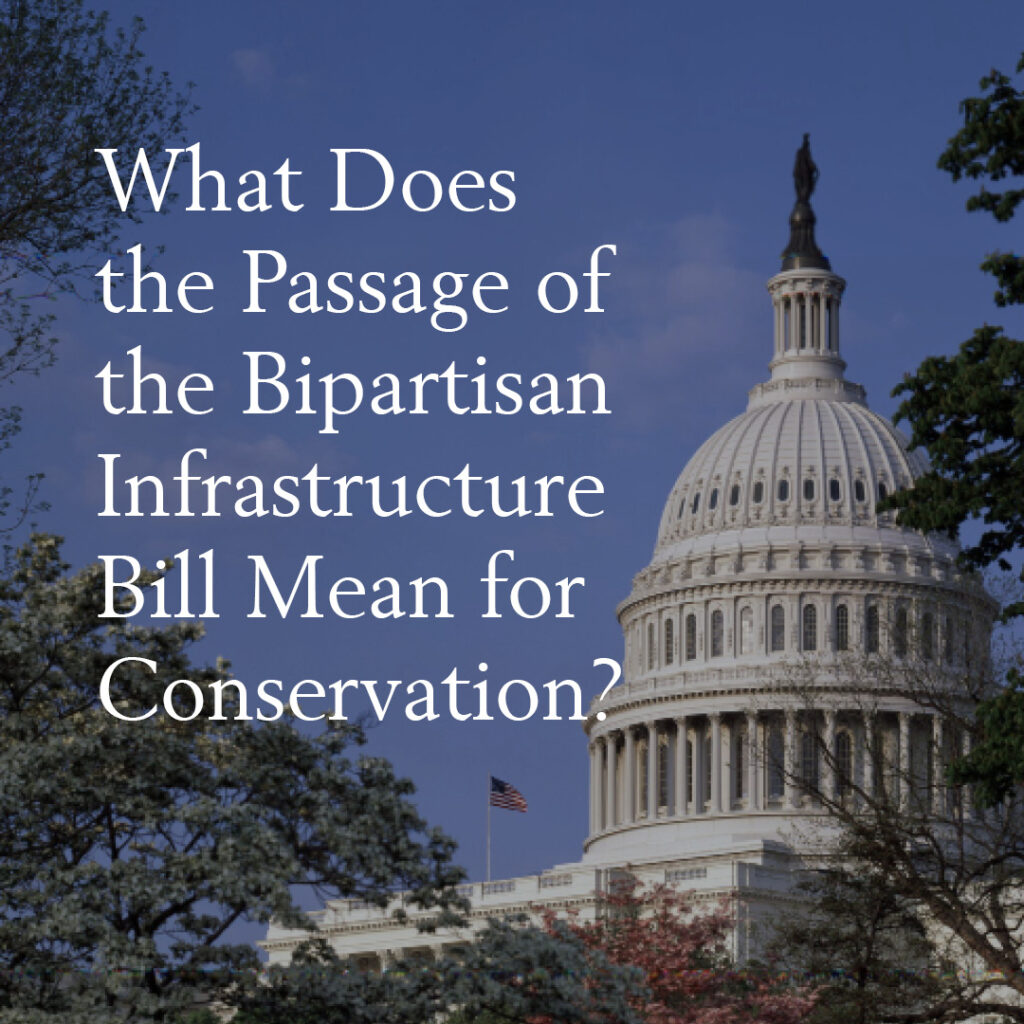The March 2022 Regional Conservation Partnership Network (RCP) Coordinators and Leaders Call focused on the Bipartisan Infrastructure Law. Highstead’s Conservation Finance team, Tara Whalen and Jackie Rigley, presented a brief overview of the law and several new and extended funding opportunities for conservation in New England that can be found in the new policy. A discussion of the obstacles and opportunities presented by the influx of funding followed.

The Infrastructure Law, passed in November 2021, funds several programs for green infrastructure and climate resiliency. Two programs that stood out to the RCP Network were the Wildlife Crossings Pilot Program and the Transportation Alternatives Program. The Wildlife Crossings Pilot Program, a new program funded at $350 million, aims to reduce vehicle-wildlife collisions while increasing habitat connectivity. The Transportation Alternatives Program received a 70% increase from past funding and supports several smaller projects including safe routes to schools, recreational trails, and bicycle and pedestrian projects. Kira Jacobs of the Environmental Protection Agency (EPA) Drinking Water Program also highlighted the opportunity of Clean Water State Revolving Funds for conservation and natural climate solutions, as echoed in a recent Highstead article. She remarked that the EPA is “trying to explore better use of State Revolving Fund money for land conservation specifically.” Kira also announced the release of EPA’s Bipartisan Infrastructure Law SRF Guidelines, which include increased flexibility in funds and increased investment in disadvantaged communities.
While participants were hopeful about the new funding, there was a shared sentiment of confusion around timing and how agencies will administer funds. As the law is quite new, much is still to be determined including application deadlines. Participants on the call voiced concerns over the possibility of small land trusts accessing any of this funding. One solution was emphasized time and time again: building partnerships. In some cases, nonprofits can directly apply to programs; however, some require partnerships with municipalities or state agencies. Tara Whalen explained how organizations can get involved by “partnering or creating lookbooks of projects in your pipeline and talking with potential partners to see where your interests align.” Partnerships also elevate grant applications and make projects more attractive to funding agencies. While waiting for further guidance on specific programs, building partnerships and identifying priority projects are key steps. Undoubtedly, the RCP Network serves as a great place to discuss the possibility of harnessing Infrastructure Law funding.
Stay tuned to Highstead’s policy series as the stalled Build Back Better Bill holds much more potential for small land trusts but has faced a difficult path in the Senate. If you have any questions on Infrastructure Law funding programs, please reach out to Jackie Rigley at jrigley@highstead.net.

